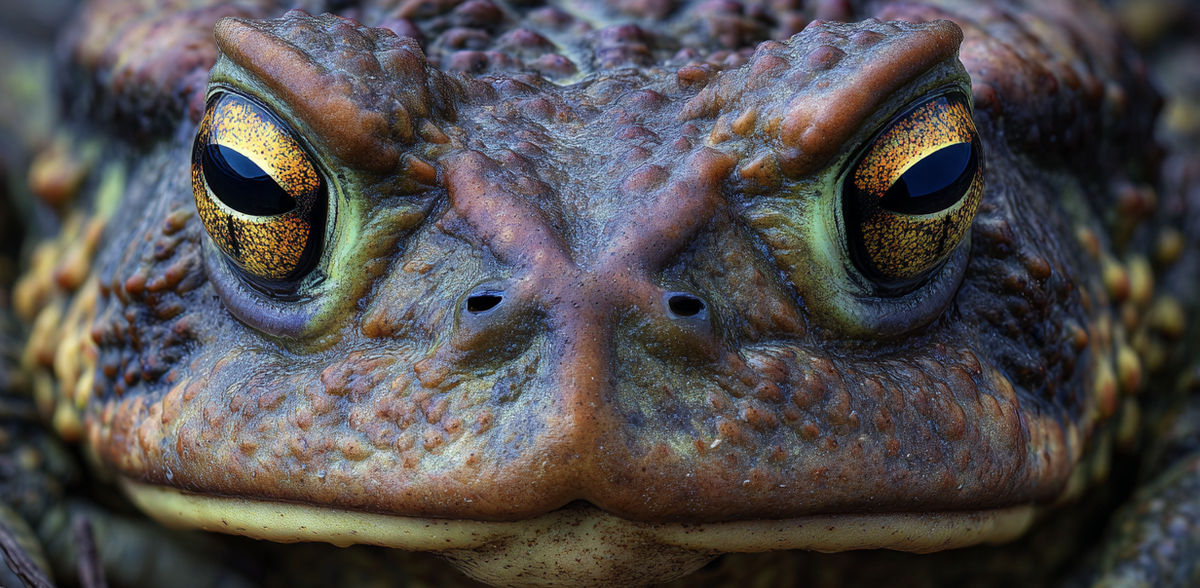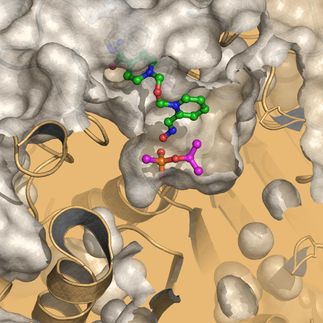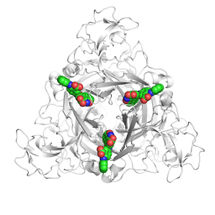Swallowing and licking toads
Pharmacologist from Ulm warns of a strange and dangerous drug trend
Advertisement
The toad is a spooky accessory for Halloween. They are traditionally added to magic potions and witches' brews. Today we know from pharmacological and toxicological research what intoxicating and poisonous substances certain species of these amphibians secrete via secretions or mucus. This explains a new, quite dangerous trend that has now spread from Australia via the USA to Europe: the consumption of toad venom, for example by licking these amphibians. Here you can read what the pharmacologist and toxicologist Professor Holger Barth from Ulm has to say about this strange phenomenon and why he expressly advises against the "consumption" of toads:
Have you also had to 'swallow a toad' today to achieve a goal? This metaphor shows that most people find toads rather unappetizing or even disgusting. Well, swallowing our native toads would probably not only take some getting used to, but would probably also be harmful to health, because toad mucus contains toxins that affect the heart, comparable to the well-known digitalis toxins in foxgloves. Like some amphibians, such as the fire salamander, toads produce toxins, so-called bufotoxins, which are excreted from glands on their skin. They are effective against predators, but also prevent colonization by bacteria or fungi.
While the consumption of native amphibians is rather unattractive in this country, in other regions such as the USA or Australia, people sometimes lick the toad to get into a state of intoxication that is said to be similar to that of LSD (lysergic acid diethylamide). In addition to bufotoxin, the mucus of the native Colorado or Aga toads contains a mixture of hallucinogens - including the substances bufotenin, dimethyltryptamine and 5-methoxymonomethyltryptamine, which are chemically similar to LSD. In Australia, where this practice originated, the skin of the Aga toad (Bufo marinus, up to 25 cm long) is also used: The poisonous toad skin is dried and boiled or smoked into an intoxicating brew. In the USA, the Colorado toad (Bufo alvarius, up to 20 cm long) is used instead. The poison is found in the form of a whitish secretion, mainly in the neck, from where it is licked directly or can be smoked in dried form. Although the consumption of toad secretions is now banned in the USA, the animals can still be kept in terrariums. In Germany, too, the secretion is now consumed and the toads are even traded legally, as the trade and "consumption" of these animals are not regulated by the Narcotics Act.
About 30 minutes after licking the toad, sensations and symptoms set in which, according to the toad lickers, are very similar to the psychological and physical effects of an LSD trip: Euphoria, disinhibition, perception of colors and light effects, but also confusion, dizziness, headache, nausea and vomiting. However, as with all intoxicants made from animals, plants or mushrooms, it is impossible to estimate the concentration of toxins and intoxicating substances in toad secretions, which can lead to poisoning with life-threatening complications such as a sharp rise in blood pressure and cardiac arrhythmia or even cardiac arrest. The use of animal hallucinogens is therefore a very dangerous matter, which is why consumption is strongly discouraged. With this in mind: please do not lick any animals in the future, or as the US National Park Service posts on Facebook for visitors: "Please refrain from licking the toads!"
The fact that we have to swallow the odd toad from time to time, however, is probably unavoidable. After all, as the Czech poet and politician Viktor Dyk wrote in his play "The Morning Toad" (1908), which is possibly the origin of the saying: "(...) if you want to get through life, you should actually swallow a toad every morning. Then you can be reasonably sure that nothing more disgusting will cross your tongue during the day."
Note: This article has been translated using a computer system without human intervention. LUMITOS offers these automatic translations to present a wider range of current news. Since this article has been translated with automatic translation, it is possible that it contains errors in vocabulary, syntax or grammar. The original article in German can be found here.
















































